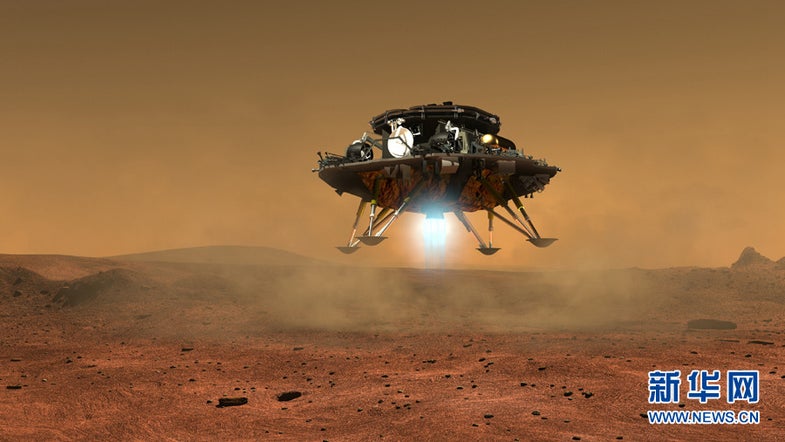China’s Martian Lander Looks for 2020, and a Name
Please Send Suggestions to CNSA


Name TDB
On August 23, the Chinese National Space Administration announced details of China’s first Martian probe; a lander and rover. The Martian probe, whose name will be selected after a global contest, will be launched in 2020. That target is set for when Earth and Mars reach the closest proximity in 26 months. It will take off from the Wenchang Launch Center on Hainan island, and reach Mars in 2021 after a seven month voyage.

Fourth Estate Special Access
The China Aerospace Science and Technology Corporation, the primary contractor for the Martian lander, also gave journalists a detailed look at the probe, which will be made available for public viewing at the 17th China International Industry Fair in November 2016

Descent
The probe consists of three parts. An orbiter which will act as a communications relay between Earth and Mars, as well as be equipped to survey the two Martian moons. The lander will deploy airbag cushions, retro rockets and a parachute to land safely on Mars. It will then release the Martian rover. The rover will be equipped with a wide range of scientific instruments, such as spectrometers, to examine Mars for everything from signs of possibly organic methane to evidence of million year old floods.

Red Rover
Chief designer Zhang Rongqiao stated that, due to the 40 minute time lag in Martian-Terrestial transmissions, the rover will be highly autonomous when it samples and observes Martian geology, weather, ice distribution and magnetic field. Zhang also noted that having enough battery capacity to weather shortfalls in solar energy collection (resulting from the Martian climate and atmosphere) are additional key challenges.

Another Chinese Space First
For follow on Martian missions, China has even bigger plans, looking to collect and return Martian soil samples to Earth in 2030, just as Chinese taikonauts are targeted to take their first steps on the Moon.
You may also be interested in:
China Launches Quantum Satellite in Search of Unhackable Communications
China’s Hybrid Spaceplane Could Reset the 21st Century Spaceplane
China’s Largest Space Launch Vehicle, the Long March 7, Flies with a Technological Triple Whammy
China Showcases Plan to Become the Leading Space Power
China’s Space Station Plans in Powerpoint: A Closer Look at Tiangong 3